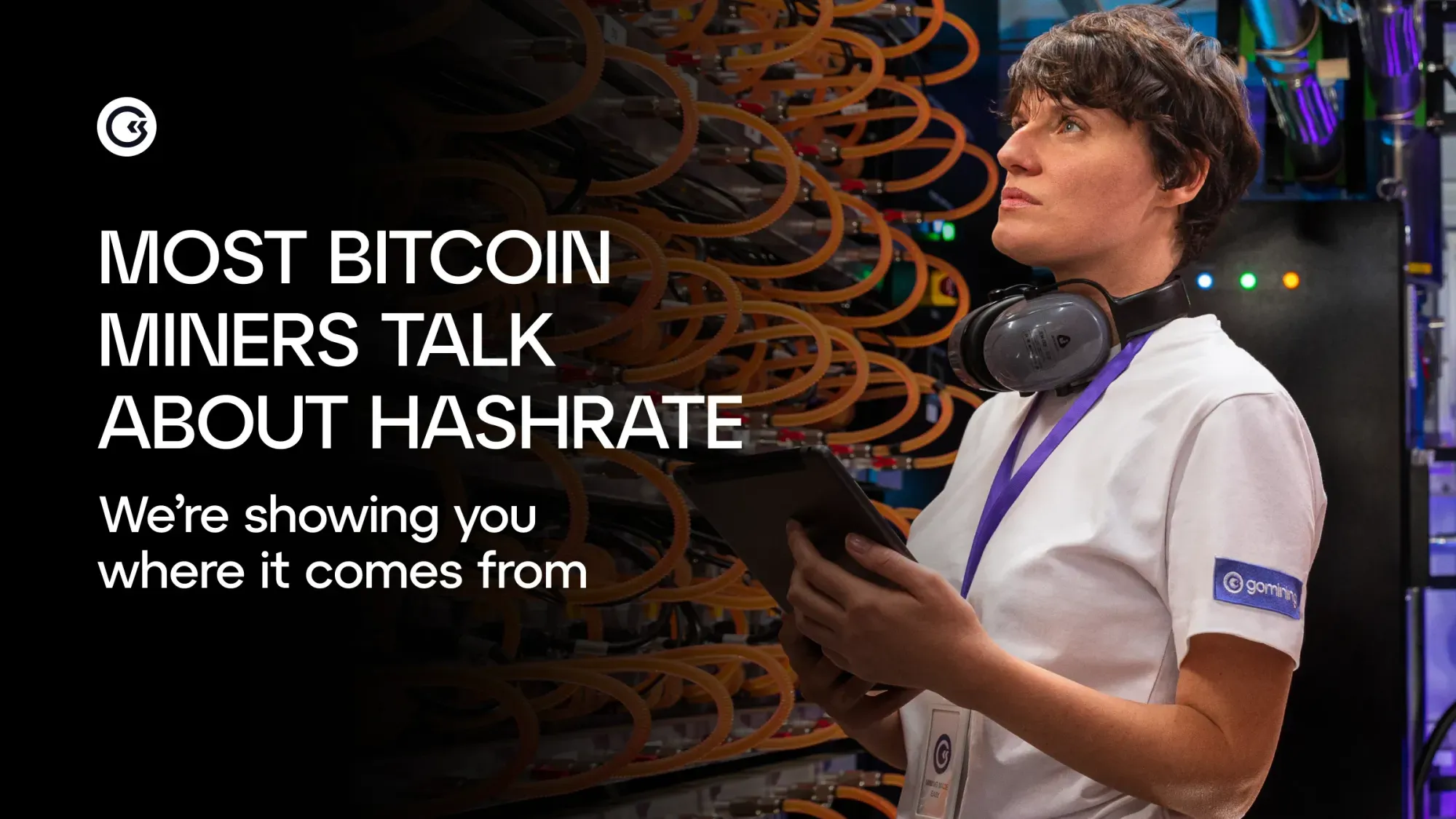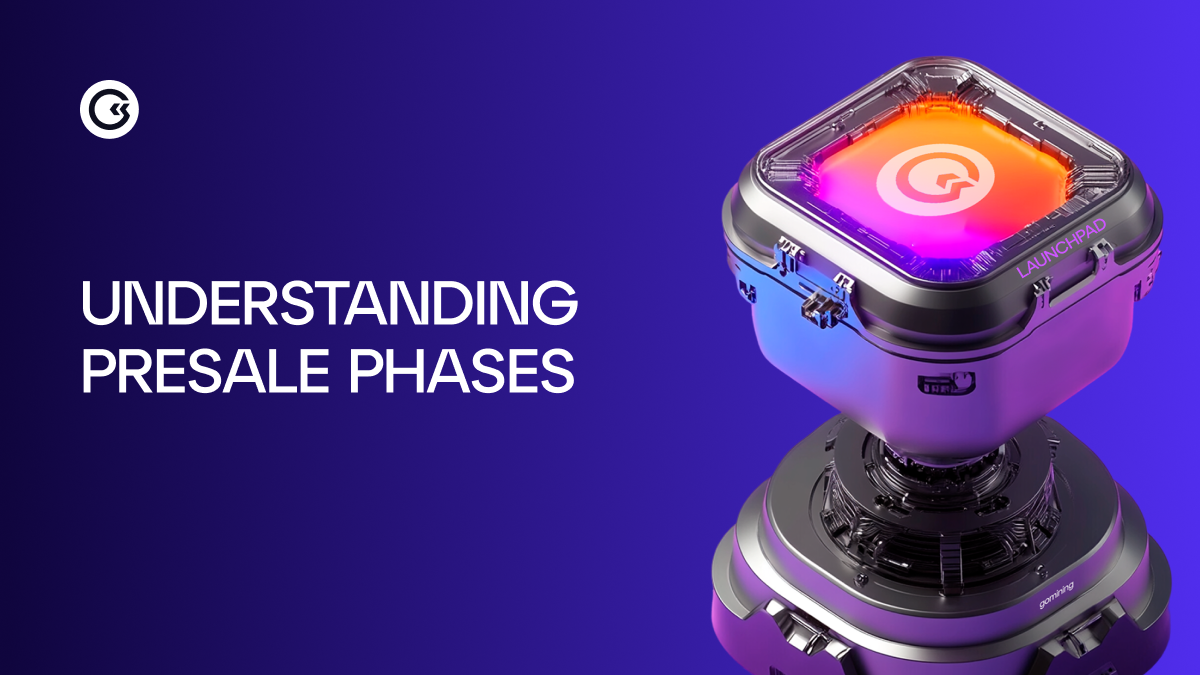Introduction
If you’ve been taking a peak at cryptocurrencies, you might have noticed the word staking popping up quite a bit lately. Maybe it’s in articles, tweets, or even conversations with other crypto fans. But if you’re scratching your head and wondering, “What’s staking all about? And why is everyone talking about it?”, you’re in the right place.
Cryptocurrency staking, “token locking” or “coin delegation” if you really want to be fancy, is actually one of the most exciting and important parts of how many modern cryptocurrencies work. Think of it like this: instead of just holding your crypto coins like you would keep cash in your wallet, token locking lets you put those coins to work for you. It’s a bit like earning interest in a bank account, except you’re helping secure a blockchain network at the same time — kind of a two-for-one deal!
You see, blockchain networks need to stay secure and run smoothly to process transactions (like sending and receiving crypto). Traditionally, this was done through mining — which is super power-hungry and often expensive — but staking offers a newer, more accessible way to do this. By “locking” your coins in the network, you help validate transactions and keep everything honest. And because you’re doing something valuable, the network rewards you with extra coins.
This is a big deal for a few reasons. For one, token locking uses way less energy than mining, which makes it a greener option — something everyone can feel good about. It also opens the door for everyday people to get involved in crypto networks, even if you don’t have fancy mining rigs. Plus, it can be a smart way to earn some passive income with crypto while supporting a project you believe in.
In this article, we’ll walk through what token locking really means, why it’s so beneficial, and how it fits into the bigger picture of blockchain and cryptocurrencies. We’ll explore how staking works in popular networks like Ethereum, what kinds of rewards you can expect, and even the risks you should be aware of. Finally, if you want to jump in and start staking yourself, we’ll give you a clear step-by-step on how to get going.
So, if you’re brand new to crypto or have some experience already, this guide will give you everything you need to understand why token locking matters — and how it might be a great addition to your crypto toolkit.
What is Staking?

Let’s break it down nice and simple. Staking is basically the process where you “lock up” your cryptocurrency tokens to help keep a blockchain network running smoothly and safely. Imagine you’re putting your coins in a special savings jar, but instead of just sitting there, they’re actively helping the network do its thing.
Now, you might have heard about mining before — the old way blockchains like Bitcoin secure their network. Mining is like a giant, super-computer race to solve complicated math problems. The winner gets to add the next block of transactions to the blockchain and earns a reward. But this approach takes a ton of electricity and expensive equipment.
That’s where token locking comes in, especially on blockchains using something called Proof of Stake (PoS) — a newer, smarter way of doing things. Instead of miners competing with powerful machines, the network picks validators. Validators are people (or computers) who hold some of the blockchain’s tokens and “stake” them — that means they lock these tokens into the network for a certain period.
How does this help? Well, the more tokens you stake, the better your chances of being chosen to verify transactions and add new blocks to the blockchain. This is a bit like a lottery, where your “tickets” are the tokens you’ve staked. If you’re picked, you get rewarded with more tokens for your effort — this is what’s called staking rewards.
By locking your tokens, you’re essentially showing you have skin in the game — you’re focused on keeping the network secure and honest. This makes it much harder for bad actors to mess with the system because validators have something valuable to lose if they act dishonestly.
You’ll probably come across a lot of discussions about staking vs mining and what’s best. Well, what’s really cool is that token locking doesn’t need all the energy-hungry computers that mining does. Because of that, it’s far more environmentally friendly and accessible to everyday people who want to get involved without buying expensive hardware or paying huge electricity bills.
So, locking your tokens is a way for you to actively participate in blockchain networks by putting your tokens to work. You help secure the system, validate transactions, and earn rewards — all while using a much greener and more inclusive method than traditional mining.
Benefits of Staking for Cryptocurrencies

So, why is staking such a big deal? What makes it so important not just for the blockchain networks themselves but also for people like you who hold cryptocurrencies? Let’s take a look at the key benefits that locking your tokens brings, breaking down why it’s gaining so much attention in the crypto world.
- Strengthening Network Security
Think of a blockchain network like a digital fortress. To keep it safe from attackers or dishonest participants, the network needs strong guards — and staking helps create exactly that. When you stake your tokens, you’re effectively putting your digital assets on the line as a kind of security deposit. This acts as collateral, which means if you try to cheat or validate fraudulent transactions, you risk losing some or all of your staked tokens. This penalty system is known as slashing.
- Promoting Decentralization
One of the biggest promises of blockchain technology is decentralization — the idea that no single person or group should have full control over the network. Token locking plays a huge role in supporting this ideal. Unlike mining, which often requires expensive, specialized machines and lots of electricity (making it hard for regular people to compete), token locking lets almost anyone with the right tokens participate.
By lowering the barrier to entry, locking your tokens spreads out the power to validate transactions across many participants rather than concentrating it in the hands of a few big players. This diversity in validators helps protect the network from central points of failure, reducing the risk of censorship or manipulation.
- Supporting Sustainability
Mining, as mentioned briefly above — especially the kind used by Bitcoin — is notorious for its huge energy consumption. Mining farms run thousands of powerful computers 24/7, which has raised environmental concerns worldwide.
Token locking offers a much greener alternative. Since it doesn’t rely on massive computational work but rather on holding and locking tokens, the energy required is drastically less. This shift to Proof of Stake makes many blockchains more environmentally friendly and sustainable over the long haul, which is a big plus for the planet and for the future of cryptocurrencies.
- Earning Passive Income
Let’s be honest — one of the most exciting things about staking is the opportunity to earn rewards without actively trading or selling your crypto. When you stake your tokens, you get rewarded with additional coins, often called staking rewards, simply for supporting the network.
Think of it like earning interest in a bank account, but often with much better rates. This kind of passive income with crypto can be a great way to grow your assets over time without extra effort. Of course, the exact rewards vary depending on the blockchain and how many people are staking, but the potential to earn while you hold is a powerful motivator for many participants.
- Encouraging Participation and Engagement
Finally, token locking isn’t just about the tech — it’s also about building a community. When people stake their tokens, they’re more involved and focused on the project’s success. This active participation helps create a vibrant, engaged user base that supports and promotes the network.
Networks reward this kind of involvement to keep things lively and growing. It’s a win-win: users get rewards and a sense of ownership, while the network benefits from more secure and reliable operations thanks to active stakeholders.
Types of Cryptocurrencies That Support Staking

If you’re new to crypto, you might be surprised to learn just how many digital coins now let you get involved through staking. It’s becoming a standard feature on many popular blockchains as they shift from energy-heavy mining to more efficient and accessible methods. Let’s take a look at some of the big names you’ve probably heard about, and what locking looks like on their networks.
Ethereum 2.0
Ethereum, one of the biggest and best cryptocurrencies for staking, has been going through a major upgrade called Ethereum 2.0. One of the biggest changes? Moving from mining (Proof of Work) to Proof of Stake. This means instead of miners using powerful computers to validate transactions, validators stake their ETH tokens to help secure the network and confirm transactions.
To become a solo validator on Ethereum 2.0, you need to deposit at least 32 ETH, which is out of reach for many people. But don’t worry — there are also token locking services and pools that let you stake smaller amounts while still benefiting from the rewards. This upgrade aims to make Ethereum faster, more secure, and way more energy-efficient.
Cardano
Cardano is another popular blockchain that runs on a PoS consensus called Ouroboros. What’s interesting about Cardano is its focus on academic research and security.
For users, Cardano offers staking pools — groups of token holders who combine their ADA tokens to boost their chances of being selected to validate transactions and earn rewards. This is great for smaller holders because solo staking (running your own validator node) can require more technical knowledge and resources.
Polkadot
Polkadot is all about connecting different blockchains, making it easier for them to work together. It uses token locking to help maintain the security of its network and to enable this multi-chain interoperability.
By locking DOT tokens, validators help process transactions across Polkadot’s many connected chains, and in return, they earn rewards. Polkadot’s design encourages participation from a wide range of validators to keep things decentralized and secure.
Solana
Solana is known for its incredible speed and ability to handle thousands of transactions per second. It relies on staking to keep validators honest and efficient as they process transactions on its network.
Users who stake SOL tokens become part of the validation process, helping to secure the blockchain and earn rewards. Solana’s high throughput makes it popular for decentralized apps, and token locking plays a key role in maintaining that performance.
Different Staking Models: Solo vs. Pools
Now, when it comes to staking itself, there are a couple of ways you can get involved:
- Solo Staking: This means you run your own validator node — basically, you’re your own boss, responsible for validating transactions directly. This requires a good chunk of tokens (like Ethereum’s 32 ETH), some technical know-how, and reliable hardware running 24/7. The upside? You get to keep all the rewards (minus any fees you pay for network participation).
- Staking Pools: Don’t have enough tokens or don’t want the hassle of running a node? Staking pools are for you. Here, multiple people pool their tokens together, increasing the group’s chance to be selected as validators. Rewards are then shared proportionally among all participants. Pools make token locking accessible to everyone, even if you only have a small amount of tokens.
Risks and Challenges of Staking

Staking can be a fantastic way to get involved with crypto and earn rewards, but like anything worth doing, it comes with some risks and challenges you should know about before jumping in. It’s important to understand these crypto staking risks so you can make informed decisions and avoid any nasty surprises down the road.
Lockup Periods: Your Tokens Aren’t Always Liquid
One of the main things to be aware of is that staking usually means locking up your tokens for a set period. This means once you stake your coins, you might not be able to sell, transfer, or use them until the lockup ends. This can vary from days to weeks or even months depending on the blockchain.
Ok, but why does this matter? Well, the crypto market is famously volatile — prices can swing dramatically in a short time. If your tokens are locked up and the market takes a dive, you won’t be able to move your assets or cut your losses until the lockup expires. So, while you might be earning rewards, the actual value of your staked tokens could be dropping behind the scenes.
Slashing: Penalties for Misbehavior
As mentioned briefly above, in order to keep networks safe and honest, many blockchains have a penalty system called slashing. This means if a validator — the person or node validating transactions — behaves badly, like trying to cheat the system, going offline too often, or not properly maintaining their node, they risk losing part of their staked tokens.
If you’re solo staking and running your own validator, this means you need to be on top of things: reliable uptime, following rules, and good security practices. If you’re in a staking pool, the pool operators usually handle this, but it’s still a risk since slashing could affect your share of the rewards or staked amount.
Market Volatility: Rewards vs. Token Value
Even though locking tokens offers the chance to earn rewards, the crypto market is unpredictable. Imagine earning a nice chunk of tokens as staking rewards, but the market value of those tokens drops sharply. Your overall earnings might not look as impressive once you factor in the price changes.
This is just the nature of crypto — it’s high-risk, high-reward. So it’s smart to think about the bigger picture, considering not just the rewards, but also how the token’s value might change over time.
How to Start Staking Cryptocurrencies

If you’re thinking, “Okay, staking sounds cool, but where do I actually begin?” — don’t worry. Getting started with staking is easier than you might expect, even if you’re totally new to crypto. Let’s walk through the basic steps so you can dive in confidently.
1. Choose the Right Cryptocurrency for You
First up: pick a cryptocurrency that supports staking and fits your goals. There are lots of options out there — like Ethereum 2.0, Cardano, Polkadot, Solana, and more. Each has different staking requirements, rewards, and lockup periods, so it’s good to do a little research.
Ask yourself questions like:
- How much do I want to stake?
- How long am I okay with locking up my tokens?
- What kind of rewards or yield can I expect?
- How stable or popular is the coin?
Choosing the right crypto sets you up for a smoother staking experience.
2. Pick a Platform or Wallet That Lets You Stake
Once you’ve decided on a cryptocurrency, you need a place to stake your tokens. Here are your main options:
- Cryptocurrency Exchanges: Many big exchanges like Coinbase, Binance, and Kraken offer built-in staking services. This is great if you want a straightforward way to stake without dealing with technical setup.
- Dedicated Staking Services: Platforms like Rocket Pool (for Ethereum) or pool operators on Cardano offer user-friendly interfaces and often lower minimum staking amounts.
- Run Your Own Validator Node: If you’re tech-savvy and want full control, you can set up your own validator node. This requires more effort — like running a server 24/7 — but it means you keep all your rewards and have more say in the process.
Choosing the right platform depends on how hands-on you want to be and your technical comfort level.
3. Acquire and Stake Your Tokens
Next step: get your hands on the tokens you want to stake. You can buy them on an exchange or transfer them from your own wallet.
Then, you’ll transfer these tokens to the staking platform or wallet where you’ll lock them up. This process might be called “delegating,” “bonding,” or simply “staking,” depending on the blockchain.
Make sure to double-check details like minimum staking amounts and lockup periods. Also, be aware of any fees for staking or withdrawing your tokens.
4. Monitor Your Staking Rewards and Stay Informed
Once you’re staking, it’s a good idea to keep an eye on your rewards and any updates from the network or platform.
Staking rewards usually get added to your staked balance periodically, letting your holdings grow over time. Some platforms let you compound rewards automatically, while others require manual claiming.
Also, keep up with any news about protocol upgrades, changes to staking rules, or risks like slashing, so you can adjust your strategy if needed.
Quick Recap
- Pick a cryptocurrency that supports staking and fits your needs.
- Choose a staking platform or run your own validator.
- Buy tokens and lock them up through the platform.
- Track your rewards and stay updated on network changes.
Starting staking is really about taking that first step and learning as you go. The more you get involved, the easier it becomes — and the more rewarding it can be.
Get BTC Rewards Every Single Day with GoMining
If you’re curious about earning crypto but feel overwhelmed by traditional mining setups, GoMining has something special for you. It’s a fresh, innovative way to get involved in Bitcoin mining — no complicated hardware, no sky-high electricity bills, and no need to be a tech wizard.
GoMining completely rethinks how Bitcoin mining works by bringing it into the digital age. Instead of noisy machines crunching away in a basement, you participate in mining through a secure, easy-to-use platform that guarantees daily Bitcoin rewards. These rewards come from real mining power, so you’re not just hoping for gains — you’re actually earning based on real hashpower working for you.
So it doesn’t matter whether you’re new to crypto or someone looking for a simpler, more accessible way to earn Bitcoin, GoMining opens the door to passive income with crypto like never before. It’s mining, but smarter, safer, and designed for everyone — no matter your budget or experience.
Ready to see how you can start earning Bitcoin with GoMining? Join the revolution and be part of the future of crypto mining today!
Conclusion
Staking is truly a game-changer in the world of cryptocurrencies. It offers a fresh, energy-efficient way for token holders to get involved in securing and validating blockchain networks. By doing this, staking doesn’t just make networks stronger and more secure — it also helps spread power across many participants, promoting decentralization, one of crypto’s core principles.
On top of that, staking opens up a smart way to earn passive income. Instead of just holding your tokens, you can put them to work and earn rewards, often at rates that traditional finance struggles to match. As blockchain technology grows and evolves, staking is becoming a foundational part of many popular projects — from the ongoing upgrades to Ethereum 2.0 to newer platforms like Polkadot and Cardano.
Of course, staking isn’t without its risks. Lockup periods mean your tokens might be tied up for a while, and penalties like slashing keep validators honest but can affect your holdings if things go wrong. But by understanding these risks and taking sensible precautions, staking can be a powerful tool to grow your crypto assets over time.
If you’re ready to explore the crypto space with more confidence, staking is a fantastic place to start. And if mining Bitcoin is on your radar but you’re put off by the complexity and costs of traditional setups, platforms like GoMining make it easy to get involved without the hassle.
Crypto is moving fast, and staking is right at the heart of this exciting journey. So why not take the plunge, get involved, and discover how you can benefit from this innovative process?
August 18, 2025













